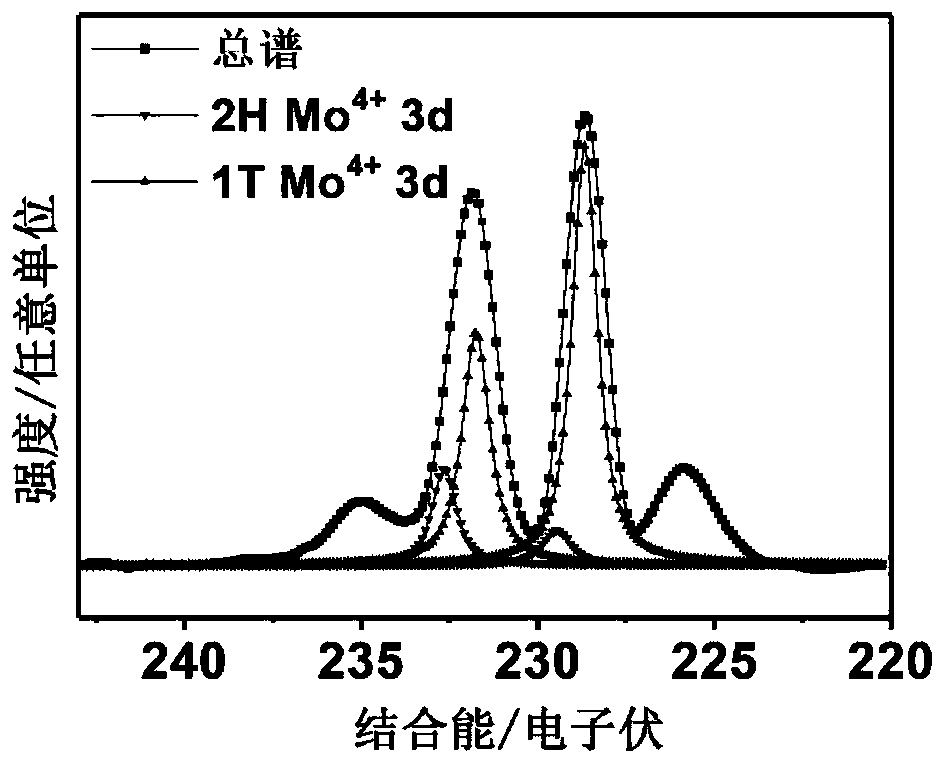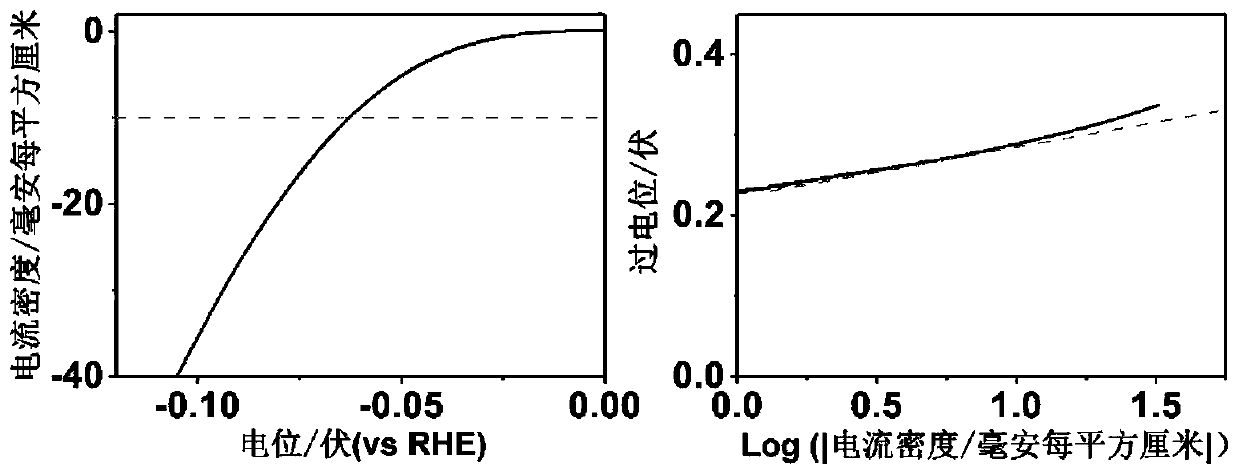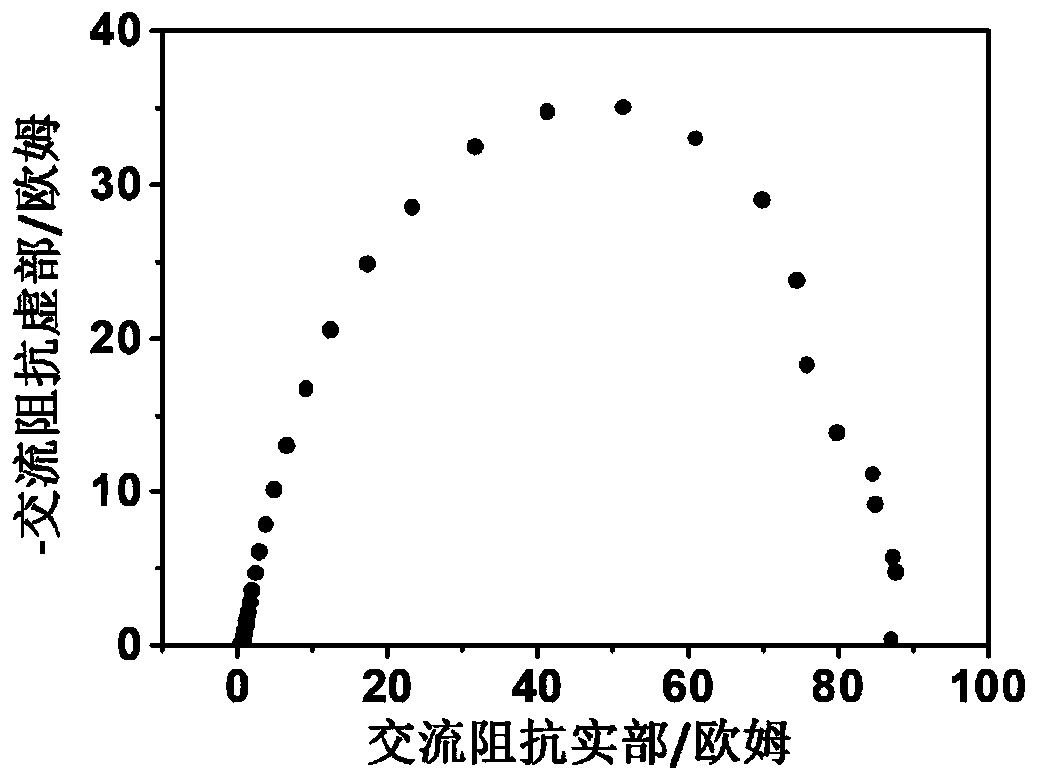A method for reducing charge transfer resistance of molybdenum disulfide-based catalytic hydrogen evolution electrode
A molybdenum disulfide and hydrogen evolution electrode technology, applied in the field of catalytic hydrogen evolution, can solve the problems of low carrier transport efficiency and low catalytic hydrogen evolution activity, and achieve the effects of high catalytic hydrogen evolution activity, simple technical scheme, and improved electron transport efficiency.
- Summary
- Abstract
- Description
- Claims
- Application Information
AI Technical Summary
Problems solved by technology
Method used
Image
Examples
preparation example Construction
[0043] Further preferably, the preparation method of copper film electrode comprises the steps:
[0044] [1] Soak the rigid or flexible carrier material in an aqueous surface modifier solution for surface treatment;
[0045] [2] Transfer the catalyst ink used to catalyze the chemical deposition of copper to the surface of the rigid or flexible carrier after the treatment in step [1] by soaking or printing, and perform pre-chemical deposition treatment;
[0046] [3] Soak the rigid or flexible support after the chemical deposition pretreatment in step [2] in a deposition solution containing copper ions to perform chemical catalytic deposition to obtain a copper thin film electrode.
[0047] Further preferably, the method of preparing the catalytically active functional layer covered on the electrode substrate by using the mixed dispersion of molybdenum disulfide nanoflakes, polyvinylpyrrolidone and reduced graphene oxide is: drop coating, spray coating or printing.
[0048] The...
Embodiment 1
[0050] Mix 10mL of ethanol and 10mL of deionized water in a beaker, add 40mg of polyvinylpyrrolidone, then weigh 200mg of molybdenum disulfide powder raw material and disperse it in the mixed solution to prepare a molybdenum disulfide suspension. Transfer the molybdenum disulfide suspension to the ultrasonic tank for liquid phase stripping, and centrifuge the molybdenum disulfide suspension after liquid phase ultrasonic treatment, and take two-thirds of the supernatant from the centrifuge tube to obtain molybdenum disulfide nanometer The mixed dispersion of flakes and polyvinylpyrrolidone is the active material for catalytic hydrogen evolution.
[0051] Soak the Teslin paper base in the stannous chloride solution for 10 minutes to modify the surface of the paper base, then take out the Teslin paper base and dry it; then use the printing method to print the solution containing silver ions on the surface-modified Teslin paper base surface; finally, the Teslin paper base with sil...
Embodiment 2
[0057] Mix 10mL ethanol and 10mL deionized water in a beaker, add 40mg of polyvinylpyrrolidone, then weigh 200mg of molybdenum disulfide powder raw material and 20mg of reduced graphene oxide powder raw material and disperse them in the mixed solution to prepare molybdenum disulfide suspension. Transfer the molybdenum disulfide suspension to the ultrasonic tank for liquid phase stripping, and centrifuge the molybdenum disulfide suspension after liquid phase ultrasonic treatment, and take two-thirds of the supernatant from the centrifuge tube to obtain molybdenum disulfide nanometer The mixed dispersion of flakes, polyvinylpyrrolidone and reduced graphene oxide is the active material for catalytic hydrogen evolution.
[0058] Soak the Teslin paper base in the stannous chloride solution for 10 minutes to modify the surface of the paper base, then take out the Teslin paper base and dry it; then use the inkjet printing method to print the solution containing silver ions on the sur...
PUM
| Property | Measurement | Unit |
|---|---|---|
| electric potential / voltage | aaaaa | aaaaa |
| electrical resistance | aaaaa | aaaaa |
| electric potential / voltage | aaaaa | aaaaa |
Abstract
Description
Claims
Application Information
 Login to View More
Login to View More - R&D
- Intellectual Property
- Life Sciences
- Materials
- Tech Scout
- Unparalleled Data Quality
- Higher Quality Content
- 60% Fewer Hallucinations
Browse by: Latest US Patents, China's latest patents, Technical Efficacy Thesaurus, Application Domain, Technology Topic, Popular Technical Reports.
© 2025 PatSnap. All rights reserved.Legal|Privacy policy|Modern Slavery Act Transparency Statement|Sitemap|About US| Contact US: help@patsnap.com



